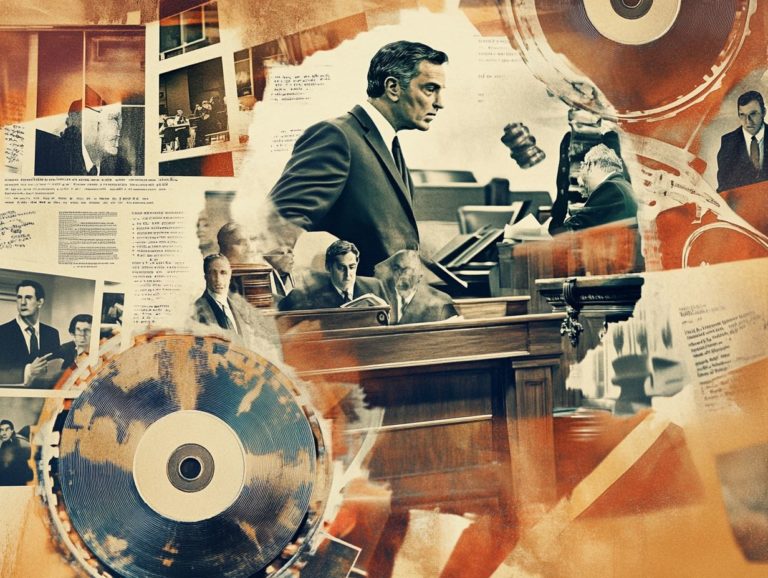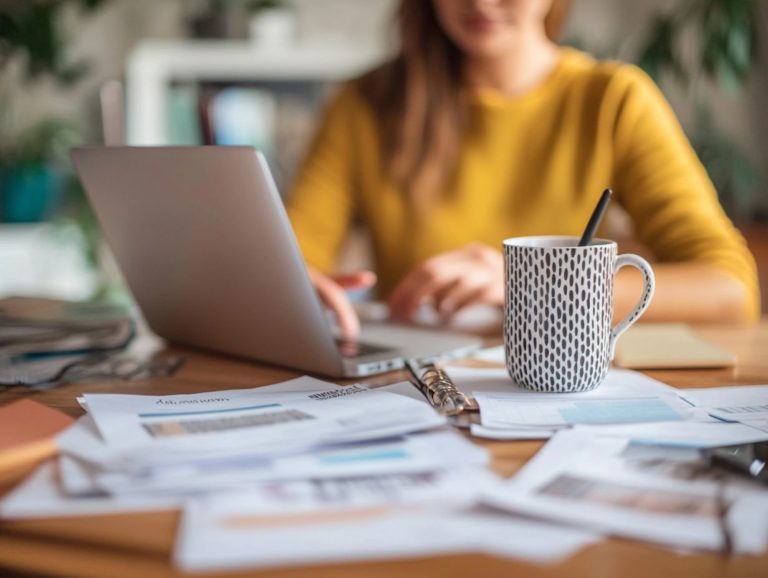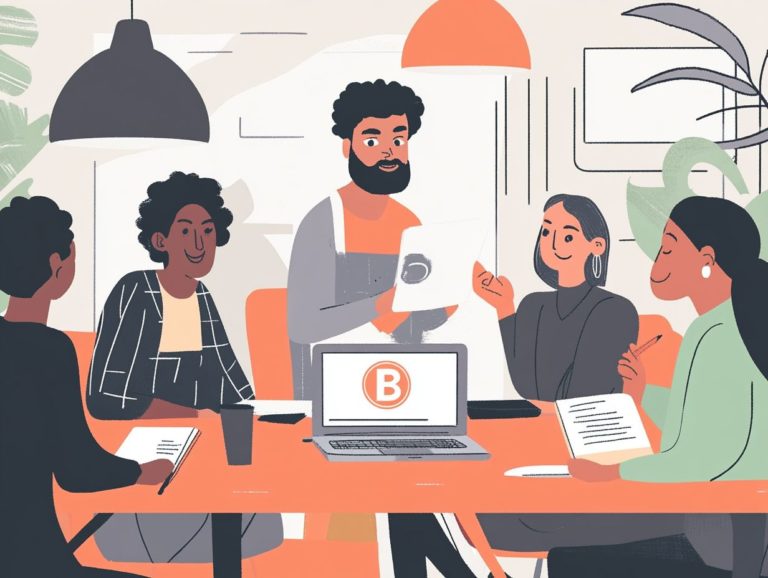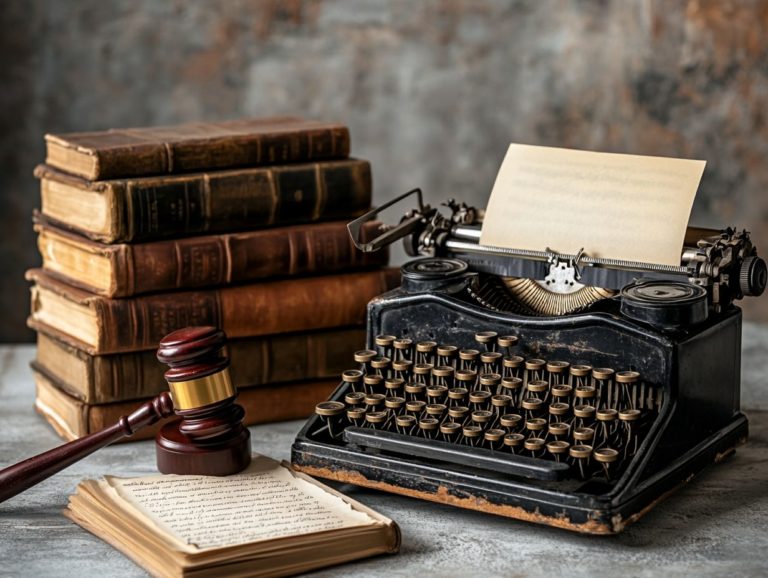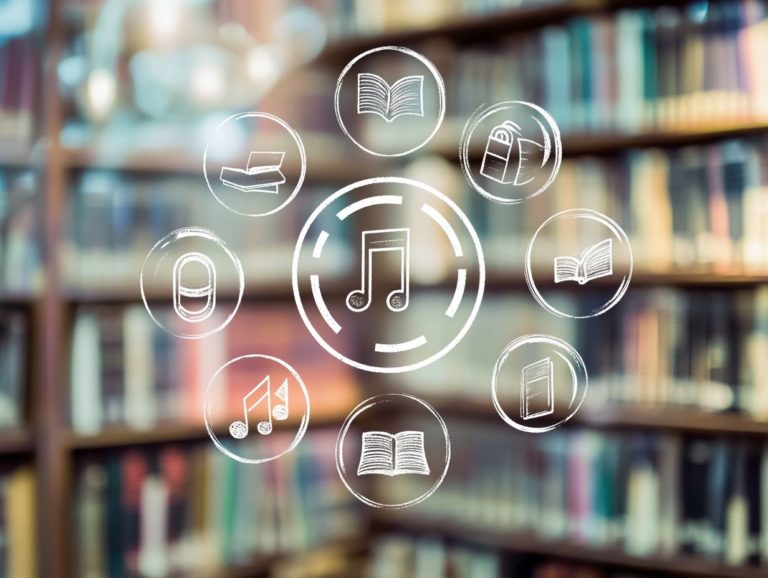The Impact of Copyright on Artists and Creators
Copyright law serves as a vital guardian of the creative expressions of artists and creators. It ensures that original works are acknowledged and rewarded while presenting some unique challenges along the way.
This article delves into the definition and purpose of copyright, shedding light on its impact on artists and creators alike. You ll explore the intricacies of intellectual property protection and navigate the complexities of infringement in our digital world.
Together, we ll examine how copyright influences innovation and shapes the creative landscape. Join us as we explore these vital topics.
Contents
- Key Takeaways:
- Understanding Copyright Law
- The Impact of Copyright on Artists
- The Impact of Copyright on Creators
- Copyright Laws and Digital Media
- Ensuring Fair Use and Creative Freedom
- Frequently Asked Questions
- What is copyright and how does it impact artists and creators?
- What are the benefits of copyright for artists and creators?
- How does copyright infringement affect artists and creators?
- What are the consequences of copyright infringement for artists and creators?
- How can artists and creators protect their work from copyright infringement?
- Are you an artist wondering how to use others’ work?
Key Takeaways:
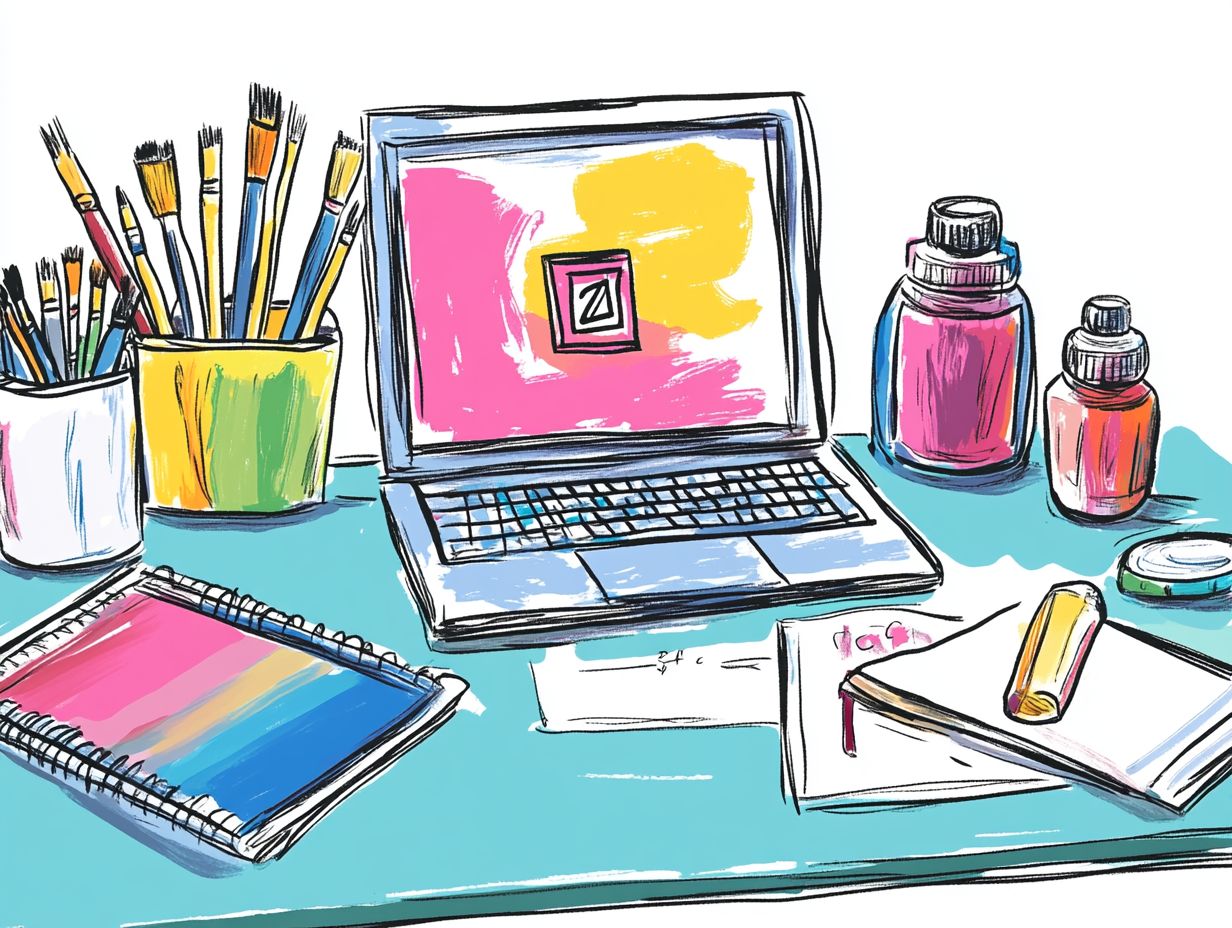
Copyright is a legal tool that protects the intellectual property of artists and creators, giving them control over their work and the ability to reap financial benefits. However, copyright also presents challenges, such as navigating infringement and balancing the need for creative freedom and fair use.
In the digital age, copyright laws have become more complex, presenting both opportunities and challenges for artists and creators in protecting their original works and navigating the digital landscape. Act now to understand your rights and safeguard your creativity.
Understanding Copyright Law
Understanding copyright law is crucial for you as an artist or creator. It offers a framework that safeguards your original works and creative rights against unauthorized use and infringement.
Being familiar with copyright laws helps you navigate the intricacies of licensing agreements, which are contracts that allow others to use your work under specific conditions. This knowledge fosters a culture of respect and support for creativity, allowing your unique voice to resonate.
Definition and Purpose of Copyright
Copyright is a law designed to protect original works of authorship, granting you exclusive rights to your creations and empowering you to enforce the law against unauthorized use.
This essential principle ensures that artists, writers, and other creators can reap financial rewards from their original contributions, thereby fostering an environment ripe for innovation and creativity. Typically, copyright protection lasts for your lifetime plus an additional 70 years, safeguarding not only your rights but also the interests of your heirs.
You should register your work with the U.S. Copyright Office to officially elevate its legal standing. This invaluable resource provides a robust framework for asserting ownership and taking action against potential infringers.
The Impact of Copyright on Artists
The impact of copyright on artists is significant. It safeguards their original creations and plays a vital role in establishing the financial sustainability of their creative pursuits through licensing and royalties, especially in light of the impact of digital piracy on copyright law.
Understanding this relationship empowers you to navigate the complexities of the creative landscape effectively.
Protection of Intellectual Property
The protection of intellectual property through copyright laws is essential for maintaining the integrity of your artistic works. It ensures that you have the legal means to enforce your rights and prevent infringement.
This legal framework not only safeguards your expressions as a musician, writer, or visual artist but also acts as a deterrent against unauthorized use of your creations. Copyright specifically grants you exclusive rights over the reproduction, distribution, and public performance of your works, allowing you to control how your art is utilized and enjoyed.
Take, for example, the well-known case of Bridgeport Music, Inc. v. Dimension Films the court ruled in favor of the music label, underlining the importance of protecting sound recordings from unauthorized sampling. These enforcement cases highlight the potential financial and reputational risks for those who infringe upon copyright, reinforcing the necessity of these protections in fostering innovation and creativity within the arts.
Financial Benefits and Challenges
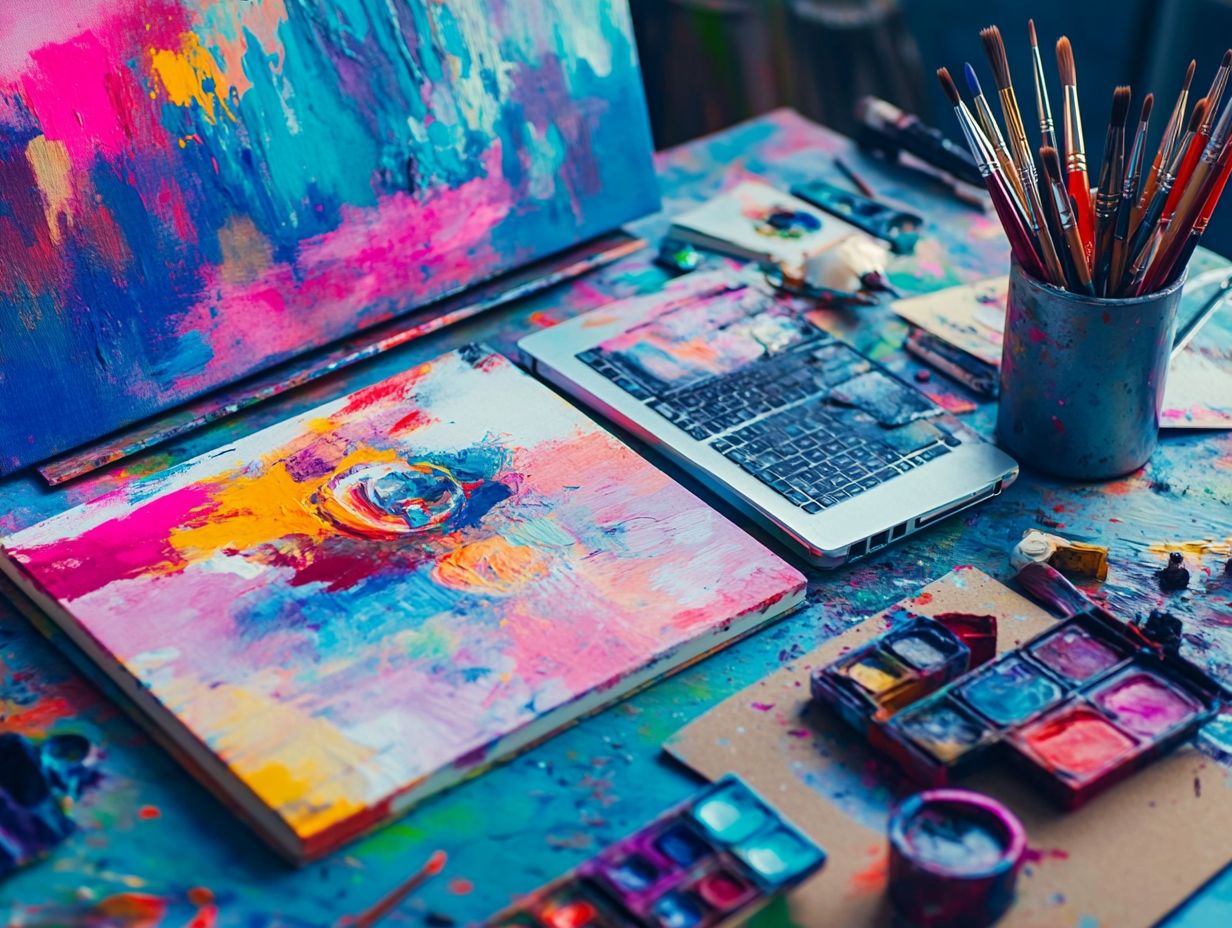
As an artist, mastering the financial landscape of copyright is crucial for your success! Copyright can be a reliable income source through royalties payments you receive when others use your work.
However, it also brings significant challenges, particularly concerning enforcement and infringement. Understanding how to leverage copyright effectively gives you the power to enhance your revenue streams.
Licensing agreements provide a lucrative avenue, allowing you to generate income by granting permission for others to use your work in advertising or merchandise.
When new works, such as remixes or adaptations, are created from your original piece, you often earn additional royalties, adding yet another layer of financial opportunity. However, the specter of copyright infringement looms large and can lead to costly setbacks.
To tackle these challenges, consider taking proactive measures like:
- Registering your works with copyright offices
- Implementing watermarking techniques
- Seeking legal advice to safeguard your intellectual property
These steps ensure that you can benefit financially while maintaining control over your creative endeavors.
The Impact of Copyright on Creators
Copyright plays a crucial role in giving power to creators like you, safeguarding your original works and granting you the authority to control their reproduction, distribution, and display.
This protection is essential for maintaining the integrity of your artistic expression. It allows you to thrive in a landscape that respects and values your creativity.
Protecting Original Works
Protecting your original works through copyright is essential. It ensures that your artistic contributions are legally recognized and safeguarded against unauthorized use or reproduction.
By registering your works with the U.S. Copyright Office, you establish a public record of your ownership. This unlocks legal benefits, such as the ability to sue for damages in cases of infringement.
Understanding your rights under copyright law is crucial; it grants you exclusive control over the reproduction, distribution, and performance of your creations.
Maintaining thorough documentation of your creative processes and any correspondence related to your works enhances your ability to enforce these rights effectively. This proactive approach protects your creative assets and instills confidence in your ability to navigate potential legal challenges.
Navigating copyright infringement demands a thorough grasp of copyright laws. It often requires seeking legal counsel to safeguard your artistic creations effectively.
When you suspect that your work has been misappropriated, the first step is to meticulously document your original pieces alongside any instances of infringement. Collect evidence such as screenshots, URLs, or physical copies that clearly demonstrate the unauthorized use of your work.
Once you have gathered the necessary evidence, the next phase typically involves reaching out to the infringing party with a cease-and-desist letter or, if necessary, pursuing legal action.
During this challenging process, community support can be invaluable. Fellow artists and organizations can offer advice, share experiences, or provide resources that empower you to stand up for your rights, reinforcing the collective strength of the artistic community.
Copyright Laws and Digital Media
Copyright laws are essential in managing the use of digital media. They present both significant challenges and valuable opportunities for you as an artist or creator.
In an ever-evolving digital landscape, these laws are crucial for safeguarding your artistic expression while navigating the complexities of intellectual property.
Challenges and Opportunities for Artists and Creators
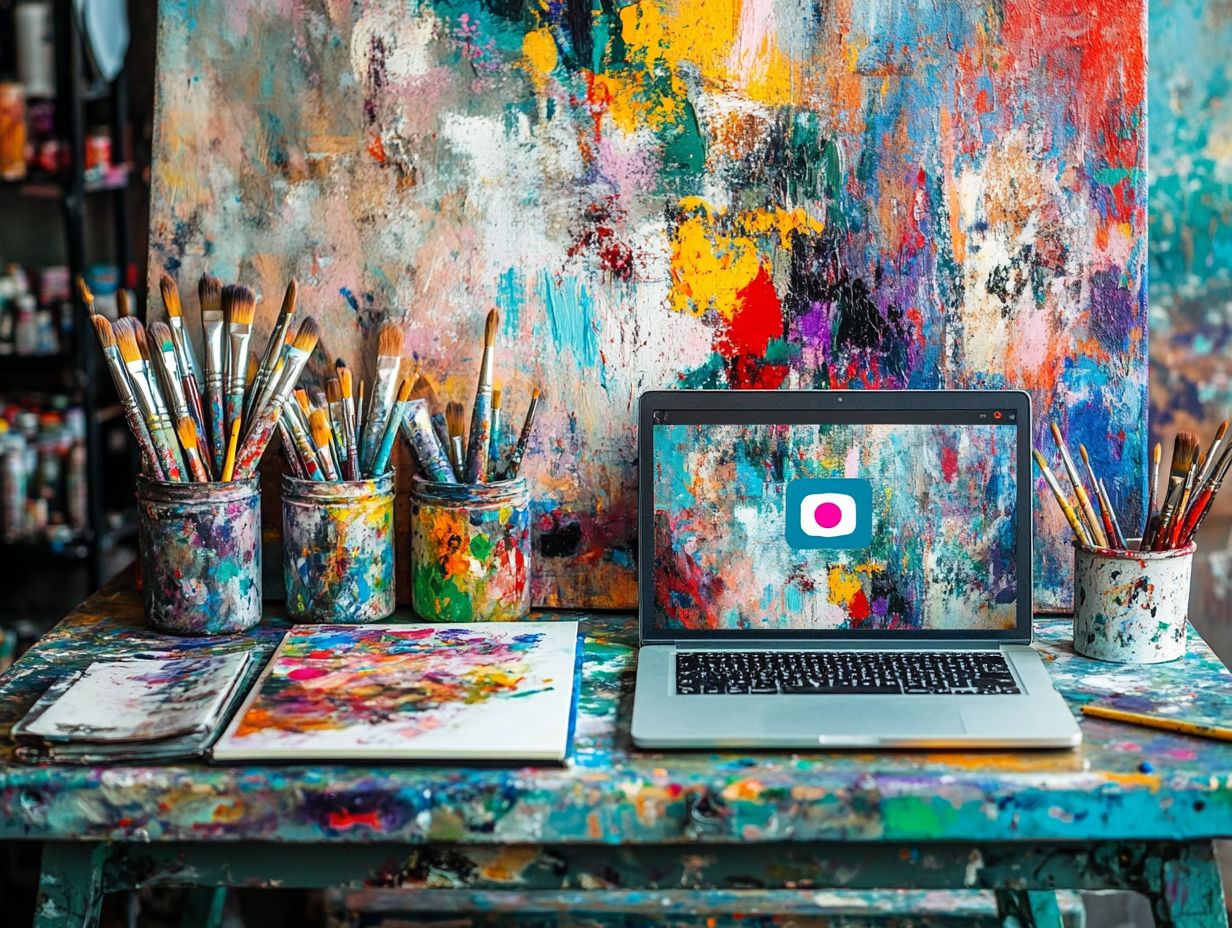
Artists and creators face many challenges in the digital media landscape, dealing with issues like copyright infringement and the frustrating enforcement of their rights.
Yet, amidst these hurdles, they are presented with unparalleled opportunities for exposure and income generation. The surge of streaming services and social media platforms has transformed the game, allowing creators to connect with global audiences like never before.
This new accessibility often has its own challenges. Unauthorized reproduction and distribution of their work can lead to substantial financial losses and diminish the true worth of their creations.
Fortunately, innovative solutions are emerging. Legal contracts that allow others to use your work, blockchain technology, and subscription models provide avenues for you to safeguard your rights while effectively monetizing your work.
By embracing these digital tools, you can navigate the complexities of copyright challenges and enjoy heightened visibility and engagement in today’s fast-paced digital landscape.
Ensuring Fair Use and Creative Freedom
Ensuring fair use while promoting creative freedom is vital for cultivating a balanced copyright landscape that fosters innovation without suppressing artistic expression.
By navigating this intricate relationship, you not only safeguard the rights of creators but also contribute to a vibrant ecosystem where ideas can flourish and evolve.
Balancing Copyright and Innovation
Balancing copyright protections with innovation is essential for you as an artist to flourish within the artistic community. It ensures that your rights as a creator do not stifle the evolution of creative expression.
To navigate this delicate balance, consider various strategies, such as utilizing licensing agreements. These contracts allow you to share your work while still retaining ownership rights.
Engaging in fair licensing practices enables you to collaborate and innovate without the worry of infringing on existing copyrights.
The significance of the public domain is immense; it offers a wealth of creative works from which you can draw inspiration. It gives you the power to reinterpret and reimagine ideas.
Take musicians, for example; they frequently sample old records, transforming original material into something fresh and distinctive, all while adhering to copyright laws. This relationship protects your rights and propels the ongoing evolution of art itself.
Frequently Asked Questions
What is copyright and how does it impact artists and creators?
Copyright gives creators control over how their work is used and distributed. It protects their intellectual property and allows them to monetize their creations.
What are the benefits of copyright for artists and creators?
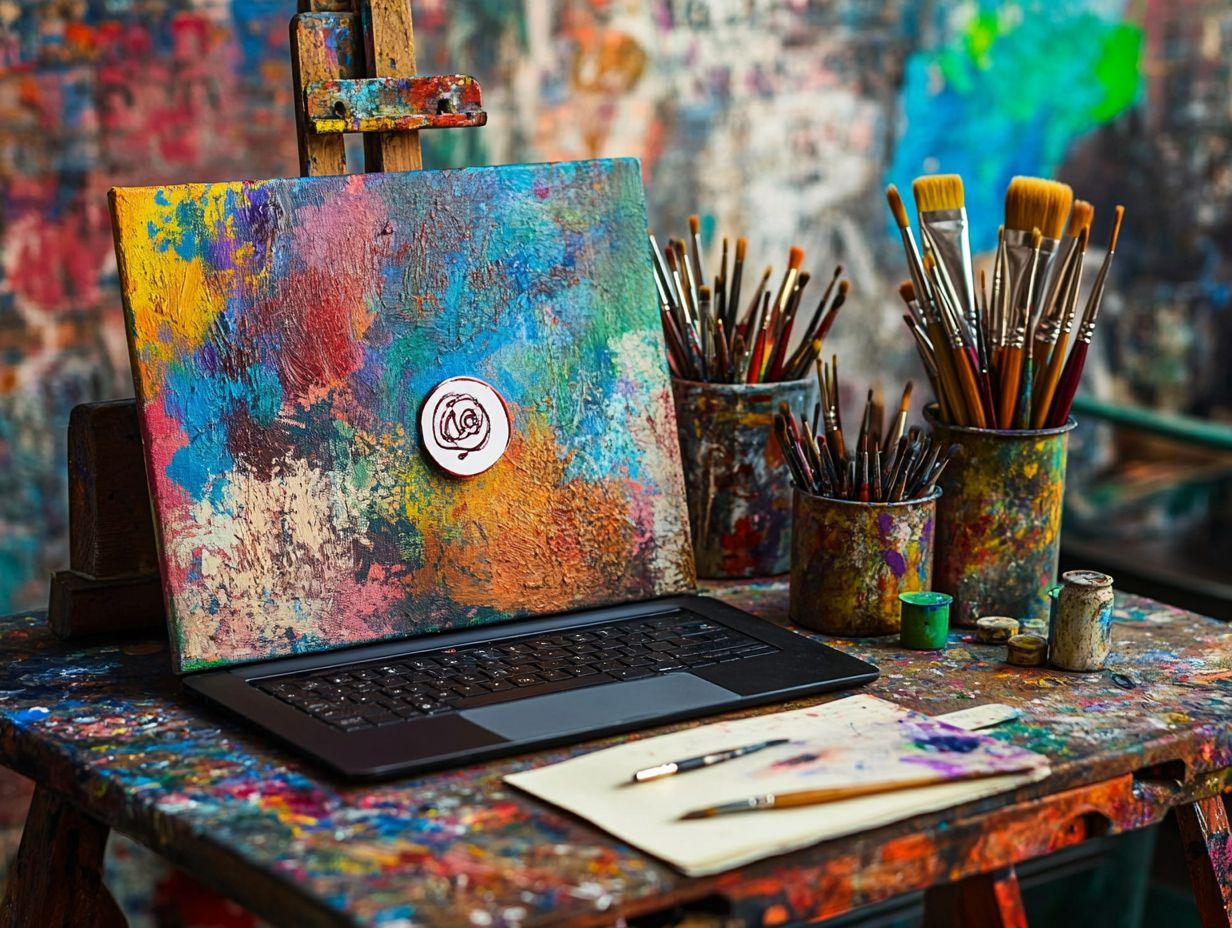
The benefits of copyright include protecting intellectual property, enabling profit from their work, and ensuring recognition of their authorship.
How does copyright infringement affect artists and creators?
Copyright infringement occurs when someone uses a copyrighted work without permission. This can reduce income, devalue work, and diminish creative control.
What are the consequences of copyright infringement for artists and creators?
Consequences can range from a cease and desist letter to legal action and monetary damages. It can also harm the reputation and credibility of both the infringer and the artist.
How can artists and creators protect their work from copyright infringement?
Artists and creators can protect their work by registering with the appropriate copyright office, using watermarks, and clearly stating terms of use.
Are you an artist wondering how to use others’ work?
Yes, there are rules that allow artists and creators to use others’ work for educational or editorial purposes.
These rules can change based on where you are. Knowing these rules is crucial for protecting your work and avoiding legal trouble! Artists and creators should research them carefully.


